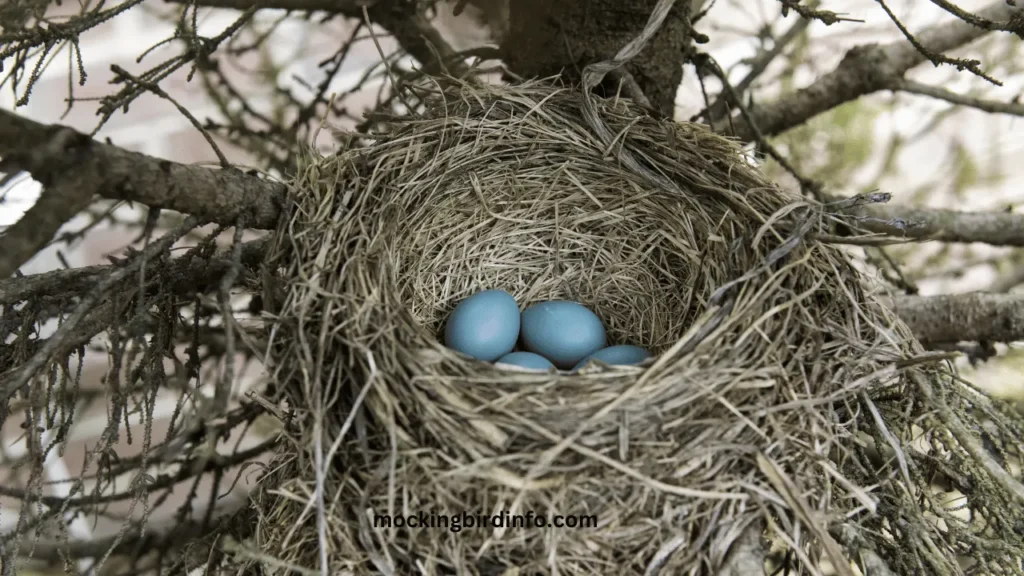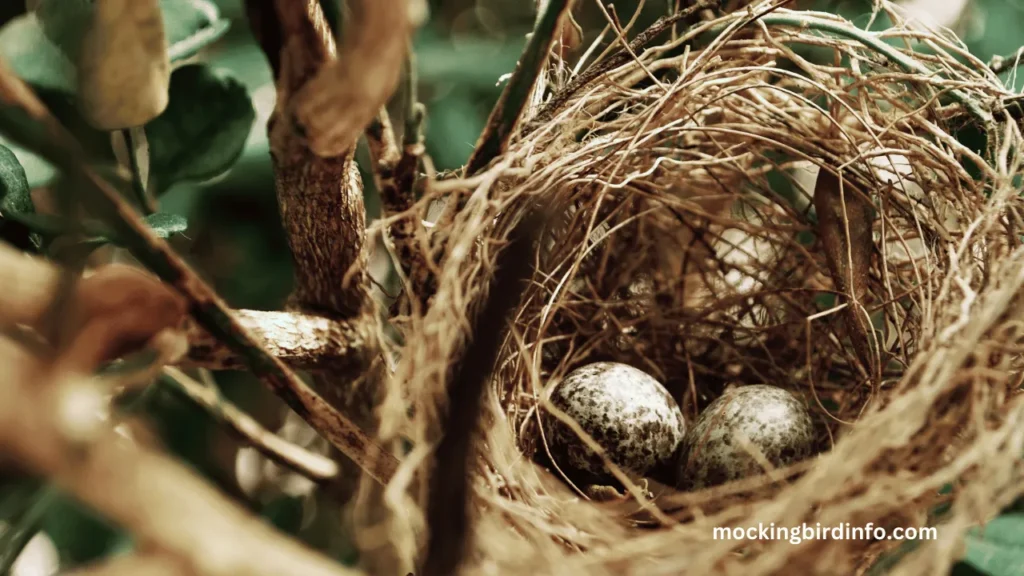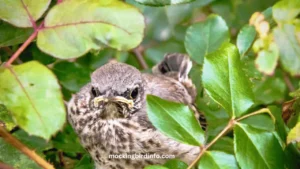The delicate world of birds’ nests holds mysteries that captivate nature lovers and birdwatchers alike. Among these, the mockingbird nest is particularly intriguing. You might have heard their rich songs or watched them flit from branch to branch, but have you ever wondered what mockingbird eggs look like?
Beyond their melodious calls, mockingbirds lay eggs that are fascinating for more than their beauty—they reveal secrets about survival, adaptation, and parental care.
Understanding the appearance of mockingbird eggs goes beyond mere curiosity; it’s a window into the intricate strategies birds use to protect their future offspring. The color, pattern, and structure of these eggs are not arbitrary.
Each characteristic has a purpose, whether it’s camouflage to avoid predators or subtle markings that help the parents identify their clutch in a crowded nesting area. By learning more about these delicate blue-green wonders, we can better appreciate the complexity of nature and the extraordinary survival tactics of mockingbirds.
This article will take you on a journey through the characteristics of mockingbird eggs, including their color and pattern, size, incubation period, and nest placement. You’ll discover why these details matter not just to birds but to bird enthusiasts and conservationists. Prepare to see these avian wonders in a new light.

Contents
Egg Color and Pattern
Mockingbird eggs are most commonly a pale blue or greenish-blue, creating a visual harmony with their surroundings. This subtle coloration helps the eggs blend into the foliage, acting as a natural camouflage against keen-eyed predators like crows or snakes.
The pale hues ensure the eggs are not easily spotted, allowing them to stay hidden within the confines of their well-constructed nests. The dark speckles and spotting patterns that adorn many mockingbird eggs serve as an added layer of defense.
These markings help break up the shape of the egg, mimicking shadows and dappled light filtering through leaves. Beyond camouflage, scientists believe that these unique patterns may also play a role in how parent birds identify their own eggs amidst a crowded nest. Each clutch can have slightly different spotting patterns, allowing mockingbirds to recognize their eggs with precision.
Egg coloration and patterning can vary based on geographic location or individual genetic traits. For instance, some eggs may appear more vibrant in their blue shade or have denser spotting. These variations showcase how nature adapts to different environments and stressors, making each nest a unique work of art tailored to its environment.
Incubation Period
Once the eggs are laid, the incubation process begins, a period defined by diligent care and watchfulness. In the case of mockingbirds, both male and female share the duty of incubating the eggs, showcasing a teamwork approach to parenthood.
This cooperation ensures the eggs are kept at a consistent, warm temperature essential for the development of the embryos. The incubation period typically spans 12-14 days, a timeframe where temperature plays a crucial role. The birds sit on the eggs, ensuring warmth and shielding them from sudden temperature drops or harsh weather.
This commitment highlights the delicate balance of life, where just a few degrees can mean the difference between successful hatching and loss. Temperature regulation also involves turning the eggs periodically to prevent uneven heat distribution.
This small but vital action ensures the developing embryos receive equal warmth, promoting healthy growth. By the end of the incubation period, the newborn chicks emerge, marking the start of a new phase in their journey.

Nest Placement and Protection
A mockingbird’s choice of nest placement is not random but is instead a carefully calculated decision influenced by the need for protection and access to resources. These nests are often found in dense shrubs or trees at varying heights, from low hedges to branches several meters off the ground.
The placement often depends on what best suits the environment’s safety and food availability. The nest itself is a bulky, cup-shaped structure made of twigs, grass, and leaves. Inside, softer materials like feathers or moss provide a comfortable lining for the eggs.
This blend of rough and soft components showcases the birds’ instinctive craftsmanship, ensuring both stability and warmth for their clutch.
Parental defense is an impressive aspect of a mockingbird’s nesting habits. These birds are famously territorial and will aggressively chase away potential threats, including much larger animals and even humans.
The courage of these small birds reflects their dedication to safeguarding their future generation. Their behavior serves as a stark reminder of how fiercely nature can defend life.
Egg Size and Shape
Mockingbird eggs are relatively small and oval-shaped, fitting in with the typical characteristics of passerine (perching) birds. The eggs’ size can vary slightly, influenced by factors such as the age and health of the parent birds.
Older, more experienced mockingbirds might lay slightly larger eggs, which could offer more nutritional reserves for developing chicks. The shape of the egg—a common oval with one end narrower than the other—helps ensure that the eggs roll in a circle rather than away if moved within the nest.
This subtle design reduces the risk of eggs falling out and becoming damaged. The resilience and optimization seen in egg size and shape speak to millions of years of evolutionary fine-tuning.
Diet and local conditions can also impact egg size. In areas where food is abundant, parent birds are likely to be healthier, which translates to well-formed eggs. Conversely, in poorer conditions, smaller or thinner-shelled eggs might be laid, showcasing the environmental ties to reproductive success.
Conclusion
Mockingbird eggs, with their pale blue hues, dark speckles, and oval shapes, embody a blend of beauty and evolutionary strategy. From their camouflage that hides them from predators to their parental incubation that ensures consistent warmth, every feature of these eggs points to the intricate dance of survival and care.
The choice of nest placement and the aggressive defense by parents highlight the dedication mockingbirds have toward protecting their young. Understanding these details enriches our appreciation for the natural world and the small wonders it holds.
Mockingbirds, though common in many areas, remind us of the complexity and intelligence in nature, emphasizing why conserving these habitats is essential. The sight of a mockingbird guarding its precious clutch can inspire admiration for these determined creatures and the myriad ways life finds a path to thrive.
FAQs
1. What color are mockingbird eggs?
Mockingbird eggs are typically a pale blue or greenish-blue with dark speckles.
2. Why do mockingbird eggs have speckles?
The dark speckles help with camouflage and may assist parents in identifying their eggs.
3. How long is the incubation period for mockingbird eggs?
The incubation period usually lasts 12-14 days.
4. Do both parents incubate mockingbird eggs?
Yes, both the male and female take turns incubating the eggs.
5. Where do mockingbirds build their nests?
Mockingbirds prefer dense shrubs or trees for their nests, choosing locations that balance protection and access to food.
6. How big are mockingbird eggs?
They are small and oval-shaped, with size variations depending on the health and age of the parents.








